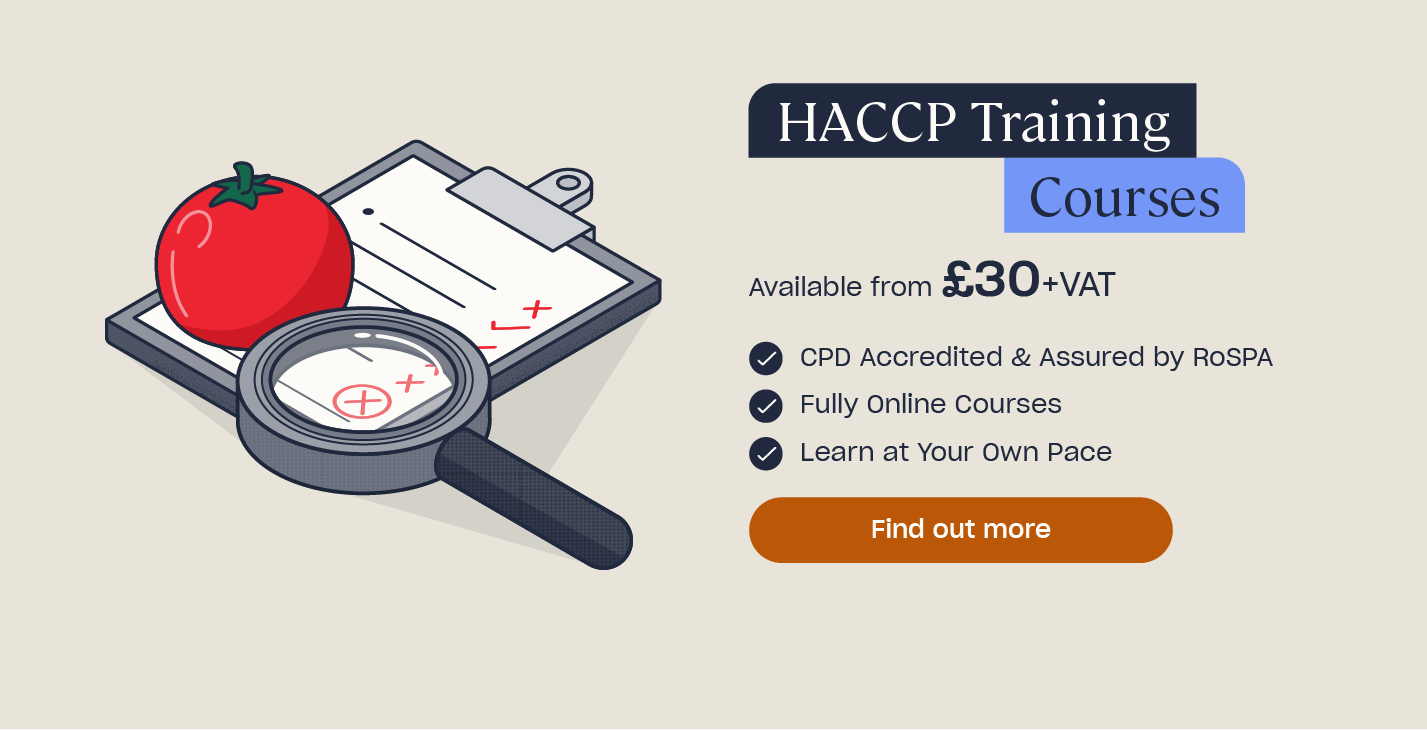What Colour Chopping Board Do I Need?
If you work with food, ensuring it is prepared safely must be a top priority. A kitchen environment can present many hazards to food safety, so it’s vital that you control these to prevent them causing harm to consumers.
One common way of reducing food safety hazards is by using colour coded chopping boards. These are an essential component of food safety and the colours mean that they can be easily identified in a busy kitchen.
If you’re a food handler, you must know which colour chopping board you should use for which items of food and ensure that you never mix them up.
Want to Learn More?
Our Food Hygiene Training is designed to ensure a comprehensive knowledge of all food safety and hygiene procedures. We also offer a range of HACCP Training Courses to teach learners about what they can do to ensure the food handled in their business remains safe for the consumer.
What are the Types of Chopping Boards and Their Uses?
The different chopping board colours exist for the purpose of food safety. In a coloured chopping board system, each board is used for a different type of food or food groups. For example, a red chopping board has a different use to a green chopping board.
Using coloured boards helps to minimise the risk of cross-contamination by ensuring that high and low risk foods, such as raw meat and salad vegetables, are kept separate. In turn, this helps to prevent outbreaks of food poisoning and upholds a good business reputation.
As well as this, coloured boards also help to prevent cross-contact between allergens. For example, using different boards for dairy-free and dairy cheeses can help to keep dairy allergy sufferers safe and maintain their confidence in your food establishment.
So, what are the types of chopping boards and what are their uses?
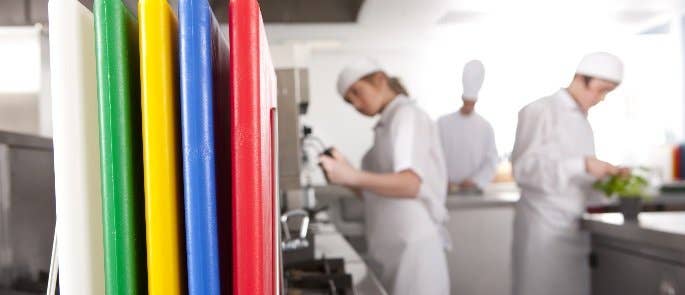
Red Chopping Board
A red chopping board is used for raw meat and poultry. Examples of when you would use this board include to cut up meat prior to cooking it, to marinate meat, or to debone a piece of meat.
You must use this board whenever you need to work with raw meat. This is essential for preventing cross contamination between raw meat and ready-to-eat foods.
Yellow Chopping Board
A yellow chopping board is used for cooked meat and poultry. For example, cooked meats like ham, salami, and turkey slices. Meat that you have cooked and that you’d like to slice or debone, such as a joint of beef or a whole chicken, are also included.
The yellow chopping board must only be used for cooked meat. Raw meat must be prepared separately, on the red chopping board, to avoid cross-contamination.
If you need to cut or prepare cooked fish, such as slicing a salmon fillet or deboning a piece of trout, then you should also use the yellow chopping board. However, you should not use it for raw fish.
Blue Chopping Board
You should use a blue chopping board for raw fish, including shellfish. For example, you would use it for fish such as cod, haddock, and pollock, for oily fish such as tuna, salmon, and mackerel, and shellfish such as prawns, squid, and mussels.
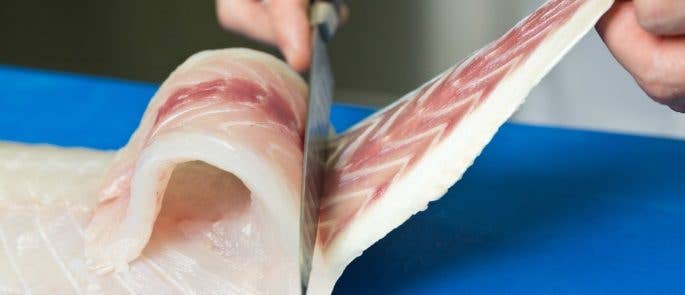
White Chopping Board
A white chopping board is used for dairy and bakery items. This means you can use it for cutting bread, cakes, and pastries. You can also use it for dairy items such as grating or cutting cheese.
You should always remember to wash your chopping boards between uses and especially when you have had food on them that contains an allergen. It could be fatal to prepare bread on an unwashed white board that you used for cheese, for example.
Green Chopping Board
A green chopping board is used for washed fruits and salad vegetables. You should use this board for cutting up fruit, such as apples, bananas, and strawberries, and when cutting up salad items, like tomatoes, peppers, and cucumber.
Brown Chopping Board
A brown chopping board should be used when you are handling unwashed root vegetables. For example, when you are cutting potatoes, grating carrots, or slicing beetroot. Root vegetables often still have soil on them, so using a brown chopping board helps to ensure that this dirt doesn’t come into contact with other food.
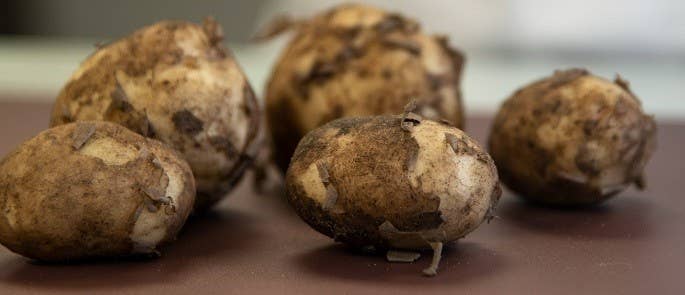
Purple Chopping Board
You should use a purple board for preparing free-from products, such as gluten-free bread. Not only is this good practice, but it could also prevent a fatal reaction for people who suffer with allergies. It’s essential that you take steps to prevent cross-contact and allergic reactions.
When Should I Replace a Chopping Board?
Having colour coded chopping boards is important for keeping food safe from microbial cross-contamination and allergenic cross-contact. However, it is equally important to regularly replace your chopping boards, especially when they are becoming old and worn.
There are two ways you can identify whether you should replace your chopping board:
- If it has deep knife scratches on it. Knife scores are unavoidable on chopping boards due to their purpose. However, if you notice a large number of knife scores or some that are particularly deep in the board then it’s time for you to replace it. Deep knife scores are the perfect place for bacteria to exist and multiply and it is difficult to clean these scores out fully.
- If it no longer sits flat on your work surface. Often when a chopping board has been cleaned lots of times it becomes misshapen and bends, rather than sitting flatly on a surface as intended. At this point the chopping board becomes dangerous and you should replace it. If it doesn’t sit flat on the surface, it can easily move when you are cutting something and therefore poses a danger to you.
It is also a good precautionary measure to replace your coloured boards if you find that somebody has been mixing them up, for example if they have been using a green board to cut raw meat.
Free Chopping Board Colours Poster
We’ve created a poster that explains the types of chopping board and their uses. You can download this for free and display it in your workplace to give people a constant reminder of what boards they should use and when.
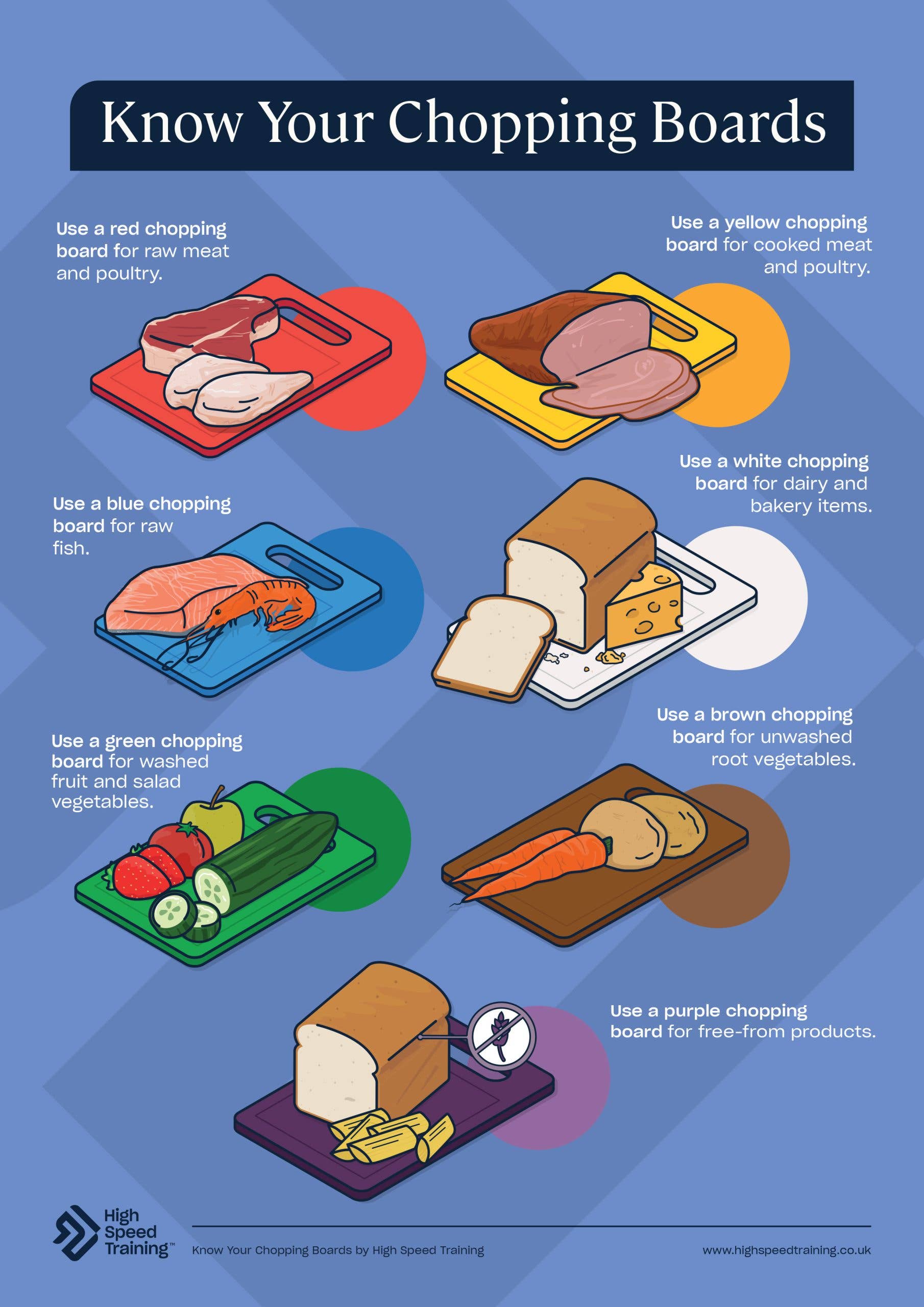
While these colours are mostly used for these purposes, it might be the case that you use the boards for different things. For example, using white for vegetables and brown for bread. You are allowed to do this, but you must ensure that you are consistent with your uses. You must always use the same colour chopping board for the same food group. For example, you cannot use the same colour for both cooked meat and dairy.
Colour coded chopping boards are a necessary component of any catering kitchen. They help to keep your food and your customers safe by minimising the risk of microbial cross-contamination and allergenic cross-contact. Remember to always be consistent with your colours and replace boards when they are worn.
What to Read Next:
- What are the Four Types of Food Contamination?
- Kitchen Safety Posters for Commercial Use
- HACCP Training Courses
- Online Food Hygiene Training


